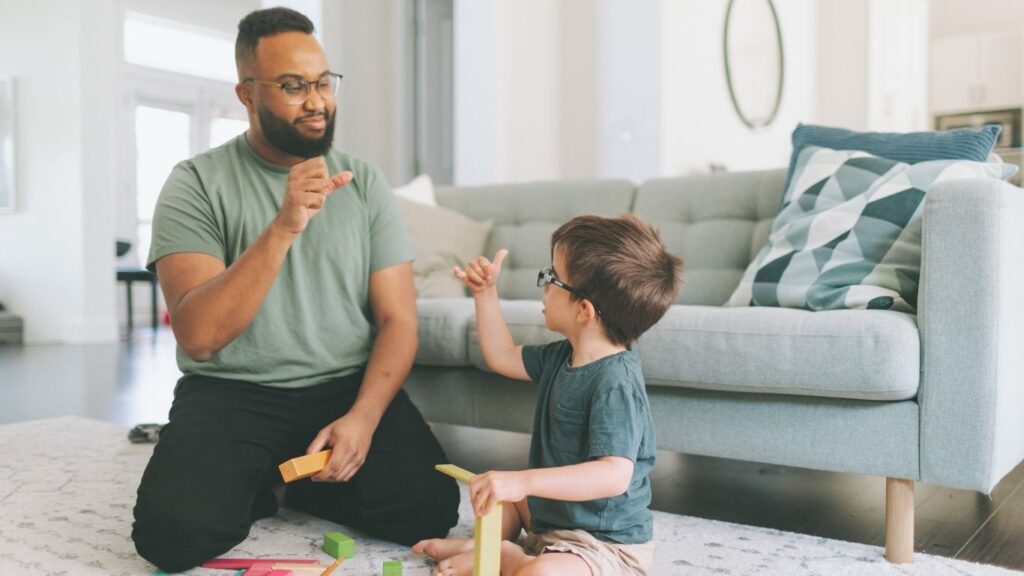Every child develops at their own pace, while that is true, speech delays can have ripple effects on learning, behaviour and confidence if we wait too long. This guide helps parents, caregivers and educators apply practical speech development strategies that actually work.
What is a “late talker” or “speech delay”?
A late talker is typically a child who has a late start to spoken words but otherwise shows typical development in other areas. A speech delay refers more broadly to slower-than-expected development of speech and/or language skills. These delays may be isolated (only speech) or part of a broader developmental difference (e.g., Developmental Language Disorder, autism, hearing concerns).
In bilingual homes, common here in Singapore, it’s normal for children to mix languages or take a bit longer to build vocabulary across both tongues. That said, bilingualism is not a cause of delay; early assessment helps determine the best support.
Why early intervention matters?
- Language drives learning. Vocabulary and grammar underlie reading comprehension and school success.
- Prevent secondary difficulties. Speech delays can lead to social withdrawal, frustration-based behaviours, or reduced participation in class.
- Plasticity is on our side. Young brains respond better to targeted, consistent practice. Early therapy often reduces long-term need for intensive supports.
- Family stress is reduced. Parents feel more confident when they have strategies that work.

Practical early intervention strategies (what Speech Therapists use and recommend)
These are simple, evidence-based approaches parents and educators can use every day.
Follow the child’s lead
- Let them choose toys or activities, we talk about what they choose. Interest = motivation to communicate.
Model & expand
- If your child says “car,” model “Red car! The car is fast.” Expand one or two words at a time.
Recast errors
- If they say “me go,” recast: “Yes, I go” or “Yes, you go.” Don’t punish errors, model correct form.
Use routines as language scaffolds
- Meal, bath and dressing routines are predictable and repeatable, ideal for practising words and sequences.
Visual supports & choices
- Choice boards, picture cards and simple schedules reduce frustration and encourage requesting. They DO NOT “increase” reliance on visuals or impede speech and language development.
Play-based drills
- Turn drills into play, (bubbles, train sets, kitchen play), and embed targets naturally.
Family coaching
- Speech therapists teach caregivers and parents how to extend language daily. Don’t sweat the small stuff, 5–10 minute focused “talk time” sessions daily are powerful.
Consider augmentative and alternative communication (AAC) if needed
- For some children, picture exchange systems or speech-generating devices provide immediate access to language as the child develops spoken language.

Activities to encourage language development at home
Early talkers
- Responsive face-to-face time: copy coos, pause and wait for response.
- Gesture games: wave, clap, peekaboo – pair gestures with words. (gestures DO NOT impede speech or language development.)
- Choice offering: “Do you want apple or banana?” (supports the skill to make requests).
- Short shared reading: point to pictures, name 1–2 items per page.
- Play routines: “First brush teeth, then story.”
Building sentences
- Role play & puppet shows: encourage storytelling.
- What/Who/Where/When/Why/how Qs: start simple, “What is she doing?”, “what happened?”, “why is she sad?”, “how do we know she is sad?” model answers.
- Copycat sentences: echo back slightly longer phrases.
- Conversational coaching: practice starters, turn-taking and topic maintenance.
- Functional language practice: role-play phone calls, ordering food, asking for help.
- Narrative building: encourage retelling events in sequence (use story maps).
Across ages: bilingual homes
- Maintain both languages if possible, therapy can happen in one language while caregivers continue the home language. Keep exposure consistent and natural. Importantly, bilingualism does NOT cause delay.
What parents & educators can expect from assessment & therapy
- Screening / assessment by an SLP will identify strengths and targets (vocabulary, grammar, speech sound errors, comprehension).
- Individualised goals: SLPs prioritise functional goals (e.g., making requests, following instructions).
- Home practice plans: short, manageable activities caregivers can do daily.
- Progress monitoring: regular reviews and adjustments.
When to seek help, a simple action plan
- Notice the red flags? Don’t wait. Arrange a hearing check and SLP screening.
- Start with a consult, many children make rapid gains with focused strategies.
- If therapy is advised, commit to daily practice (10–20 mins) and join parent coaching sessions.
- Keep school in the loop, share strategies with teachers for classroom carryover.
Final thoughts
Small, consistent steps lead to big changes. You don’t need to be a “teacher” to help your child, your natural interactions are the most powerful therapy if done with intention. If you’re worried about speech or language, the sooner you check in, the better the outcomes. Need help? Book a screening with our AHPC-registered speech therapist at Joyful Soul Psychology. We’ll give you a clear plan and simple daily strategies to get language growing. WhatsApp me at +8835 3015.
